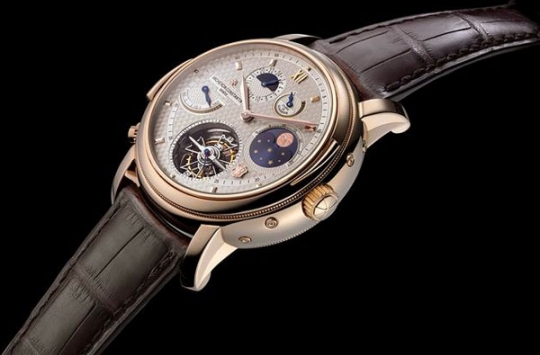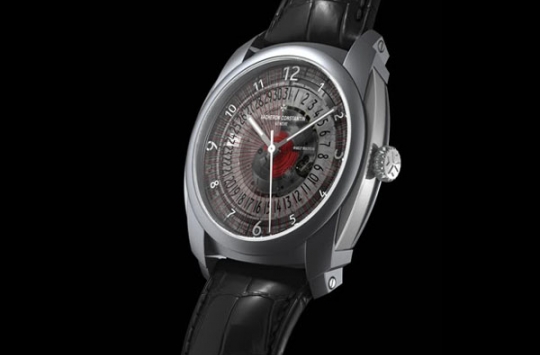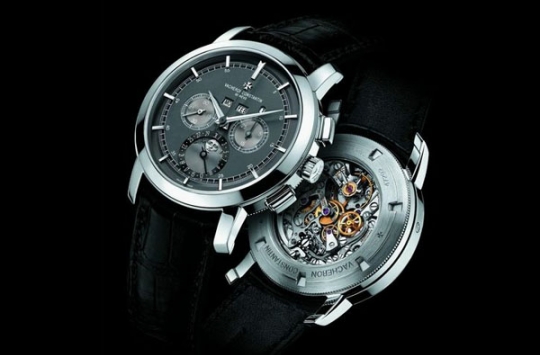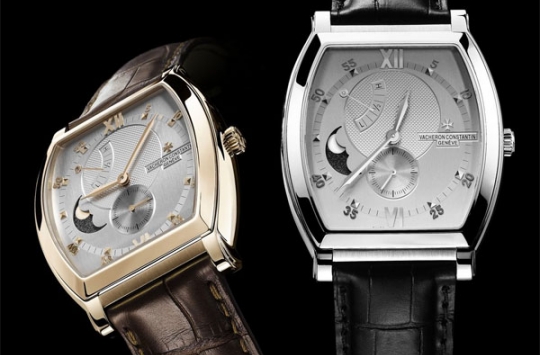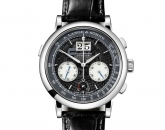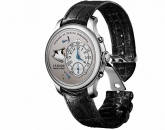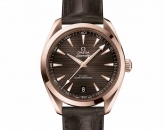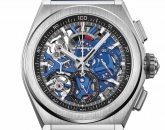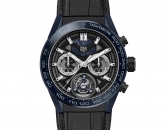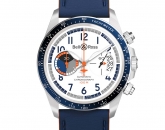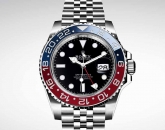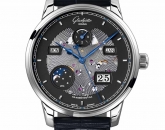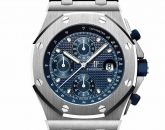If there were three Swiss brands a watch collector ought to have in his arsenal, it would have to be the triumvirate made up of Patek Philippe, Audemars Piguet and Vacheron Constantin. These time- honoured manufactures have essentially maintained their position at the pinnacle of high watchmaking since the beginning of their long histories, and the fact that these have spanned generations makes their reputations all the more impressive.
Vacheron Constantin, in particular, has been one of those that have caught my fancy since the beginning. And why not, with a client book that reads like the who’s who of the past 250 plus years, the brand’s lineage is certainly beyond question.
Since its earliest days, Vacheron Constantin was the Swiss government’s gift of choice for royalty and heads of state. In the 1950s, a few years after the end of World War II, when the Allied leaders met at the Palace of nations in Geneva for peace talks, all of them, including then US President Eisenhower and the British Prime Minister Anthony Eden, were presented with a Vacheron Constantin as a commemorative gift. Even Queen Elizabeth received a timepiece from the Swiss government upon her coronation in 1953.
But what has really fuelled Vacheron Constantin’s staying power? Is it the brand’s long, uninterrupted history that began more than 250 years ago? Is it the impressive list of royalty and dignitaries that have, on occasion, worn a Vacheron & Constantin masterpiece on their wrists or chains?
To understand the true essence of this brand, a roundup of past achievements is necessary. It was in the 18th century when the name Vacheron became synonymous to fine watchmaking, mainly due to a young intellectual Jean Marc Vacheron, who joined the ranks of Geneva’s cabinotier and quickly established a reputation for producing high quality timepieces. Word of his talent reached the royal courts of Europe, where his creations impressed even the royal watchmakers and timekeepers of the court.
In 1770, Constantin created his first complication, and nine years later designed his first engine-turned dials. His brand became a frequent participant in design competitions, receiving many top prizes.
Jean Marc’s son, Abraham, took over the family business in 1785, and 25 years later, grandson Jaques-Barthélemy initiated the company’s first exports to France and Italy. It was during this time that a partner was introduced to the firm, François Constantin, who, as the person in charge of international distribution, helped the company become recognized in far-off markets like north America.
But it was a man by the name of Georges- August Leschot that further cemented Vacheron Constantin’s position in the watch industry. Hired in 1839 to supervise manufacturing operations, Leschot is credited for being the first person to standardize movements into calibres.
While efforts had already started in the direction of creating parts usable for serial production, the machines that were created at the time weren’t as reliable or consistent, resulting in watches that, even with the same design and movement, could essentially be considered one-offs because each watch only worked with its own unique set of parts. But Leschot was able to devise machines that could produce components that were, in effect, interchangeable in the same calibre, which resulted in a drop in production costs and increased efficiency for the company. Because of this achievement Vacheron Constantin became a major supplier of components and ebauches (incomplete movements), including to established brands like Cartier. One could also say that the manufacture played a pivotal role in the industrialisation of watchmaking, paving the way for future watchmaking giants such as Omega and Rolex.
The brand continued creating classical pocket watches until the early 20th century when the Golden Age of wristwatches began. However the contributions to the world of horology did not stop there. The brand actively participated in the research for antimagnetic watch technology
since the late 1800s, having first experimented with non-ferrous materials for the balance and hairspring in 1846 and creating the first anti- magnetic watch in 1885. Today Vacheron Constantin continues to be the industry’s leader in the field, brought to the fore today through the company’s Overseas line, which is among the few in the market (apart from Audemars Piguet’s Royal Oak Offshore) that have antimagnetic inner shielding for its watches.
Vacheron Constantin was a solid force in watch innovation and design until the quartz revolution in the late 1960s, where the house struggled to maintain its traditions of mechanical watchmaking despite the weakening of the market. It entered a period of decline, as if slept through the next two decades.
The renaissance of the mechanical watch industry in the 1990s helped the brand come out of its slumber. It released five main collections, starting with the Overseas, or the sporty line; Les Historiques, which are re-editions of the classic designs from the ‘40s and ‘50s; the basic Les Essentielles line; and Les Complications, which made up the haute horlogerie pieces like minute repeaters, tourbillons and perpetual calendars.
In addition to working on new in-house calibres for complications, the company broke new ground in technical mastery while focusing on novel ways of telling the time, with pieces such as the Mercator, which featured a compass-type retrograde minute and hour indicator, and the Metiers d’Art, which became a continuous series of themed collections depicting dazzling enamel artwork and engraving.
In 2005, to celebrate its 250th year, the house released the one of the most complicated wristwatches in the world, the Tour de l’Ile, which was made up of 834 parts and featured 16 different complications.
Since then, there seemed to be a deluge in creativity at Vacheron Constantin. In the years that followed, the manufacture unveiled some of the most interesting and innovative pieces in the market:
Released in 2008, the Quai de l’Ile stands for the efforts the brand has made to showcase a new watchmaking aesthetic. Brandishing its new cabinotier department, the manufacture created a unique watch that can be personalised by choosing components from a large
selection of options. With a revolutionary case of
seven main parts, a choice of three metals (pink gold, palladium and titanium) and three dials featuring top- secret security printing technology, the watch can be assembled in nearly 400 different combinations. The Quai de l’Ile comes in an automatic with date powered by the calibre 2460 SC and one with a day-date and power reserve, housing the
calibre 2460 QH.
Another line with an impressive following is the Patrimony Traditionnelle, which was first introduced in 2007. This is widely held as the collection that testifies to the brand’s technical and aesthetic prowess, mainly for the simple yet exquisite workmanship that show off the manufacture’s most beautiful historical models. It was early this year that the company introduced the new Patrimony Traditionnelle Chronograph, featuring the renowned calibre 1141, a self-winding column-wheel movement with 42-hour power reserve, celebrated not only by Vacheron Constantin but many other watchmakers for its superb construction.
And then just recently, the Malte Moonphase Power Reserve was launched, 10 years since Vacheron Constantin launched the collection, with its first in-house tourbillon and
manual-winding chronograph with perpetual calendar. The tonneau-shaped Malte Moonphase Power Reserve comes with a movement based on the manual winding in-house calibre 1400. The case is a generous 39x49x13mm, a little bit smaller than the Tonneau Chronograph and Tourbillon Regulator. And as with the entire collection, the brand shows much talent in incorporating a variety of finishes on the dial.
For 2010, Vacheron Constantin has decided to go for the ultra waif look. A sneak peek at its SIHH novelties reveals that house has revived some of its finest and thinnest movements from the 1950s and 1960s for its Historiques collection. The brand considers the 20th century as its “Golden Age” for ultra-thin watches, and it is from this period that it has chosen to conjure it's latest pursuits:
The Ultra-fine 1955 is equipped with the handwound 1003 movement, which comes in a thickness of 1.64mm (about the size of a 20-cent coin), making the watch, at 4.1mm, the thinnest in the world. The Ultra-fine 1968 features the automatic 1120 calibre, with a new decorated oscillating weight. Both watches bear the Geneva Seal and were developed at Vacheron Constantin’s historical L’Ile facility.
With developments that have wowed aficionados, impressed experts and swayed critics, I believe that the essence of Vacheron Constantin’s staying power is fuelled by its motto, “Do better if possible and that is always possible.” With such a close connection to its past and a promising future, it is without a doubt that VC will continue its reign as one of the outstanding pillars of horology.
Click here to see the published article.


